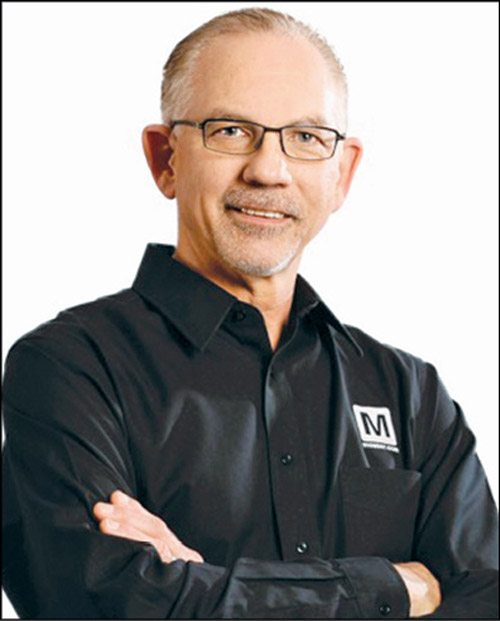By leveraging advances in electronics, software and communication systems, the automation sector has improved a lot in the past decade. It has helped industries improve productivity and throughput. But at what point does it get too fast for its own good? Find out, as Glen Smith, CEO, Mouser Electronics, speaks with Atul Goel and Dilin Anand of EFY

Q. I see you are wearing a Jawbone and other wearables. After fitness, which area will wearables disrupt next?
A. I am a ‘wearable’ guy. I cannot predict what will be hot next, but many people I know talk about home automation. This is not a new area; I have had a home that has been automated since 1988. But, what is new is the level of integration between the home and the person living in it.
Q. How will this work in the real world?
A. Let us take an example. A lady I once met owns a Jawbone and a Nest Thermostat, which actually talk to each other; when she tells her Jawbone UP24 that she is going to sleep, it tells her Nest Thermostat to adjust the temperature accordingly. She is not into electronics, yet is familiar with this level of automation.
Q. I have heard that once a purchase is made at your site, it takes just 15 minutes to have it dispatched for delivery. What kind of automation achieves this?
A. Our warehouse is extremely automated. Everything is wireless and our people use iPads and apps to operate the warehouse. There are kilometres of conveyers and many carousels that spin the product to the person who is pulling and counting. We use automation to make everything as efficient as possible. At a glance it might look like it is 100 per cent automated, but the truth is that it cannot be so because you are selling to an engineer.
Q. What is unique about selling to an engineer?
A. A manufacturer orders reels of electronic components. But, when you are selling to an engineer, he or she wants small quantities. I cannot automate a machine that will take a reel, cut it into, say, three pieces, and put it in a bag. Apart from this, we have automated everything else.
Funny you mentioned earlier, 15 minutes is how long it takes to process, but we delay a little.
Q. Why would you delay the process?
A. We had problems where a customer would place an order and call back minutes later to say that he or she needed to add an item to the order. When our sales person would tell the customer about the order already being in the truck, he or she would not believe the sales person. This gave a bad name to our company.
That is why we put in a 15-minute time delay, which was found to be, statistically, the sweet spot to take care of last-minute order changes.
Q. What do you think is the easiest way for an engineer to discover new components for his or her design?
A. Engineers these days are no more limiting their use of component sites to search for a particular part number. They are looking more at these sites for solutions in the form of component suggestions for a particular product. We were able to make this out by looking at the way people were navigating through our site.
For component discovery, we suggest products to engineers so that they do not have to go out and search for these themselves. Here, we are looking for products that would complement and still be usable in the same design. However, sometimes the application might change what the optimal suggestion should be.
Q. How can the application affect component suggestion?
A. There are different kinds of requirements for each device even if component functionality is similar. For example, if a customer is looking at a product from a medical device viewpoint, the requirement would be medical, and so the associated products are for that application.
On the other hand, another customer might be looking at the same component but from an automation device point of view, like an industrial gas monitor. Therefore it is impossible to suggest components unless we have information on the application area as well as other details.
Q. What are some exciting projects someone associated with Mouser has worked on?
A. Grant Imahara is the person who built the Energizer bunny. He had built a robot that cost US$ 250,000. He was also one of the three people in the world who controlled R2D2 from Star Wars. I guess he is probably one engineer who has had the chance to build some of the most exciting projects that the world has seen.
Grant and Mouser are teaming up for this project called Empowering Innovation Together, which focuses on some of the most innovative and creative engineers worldwide.







